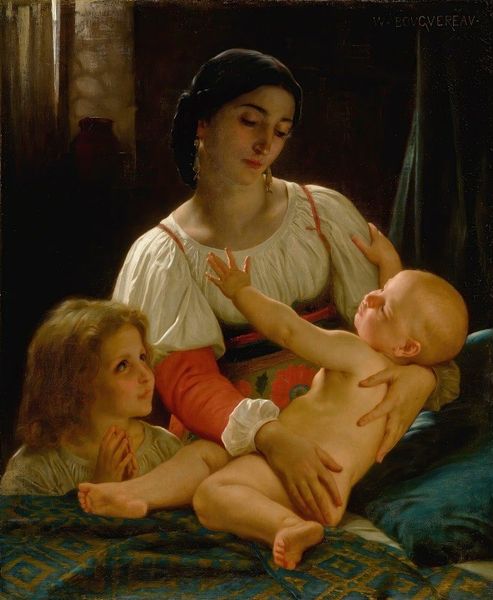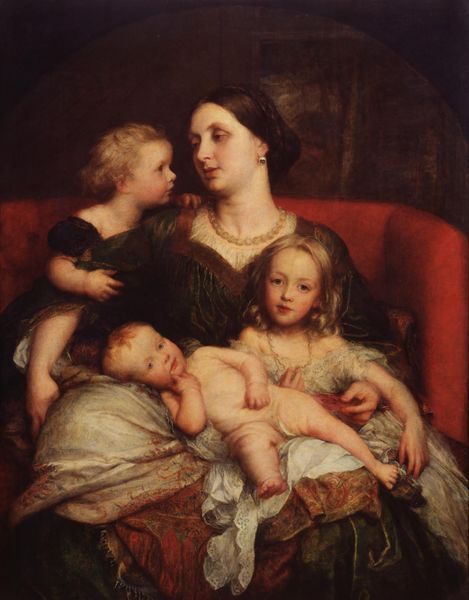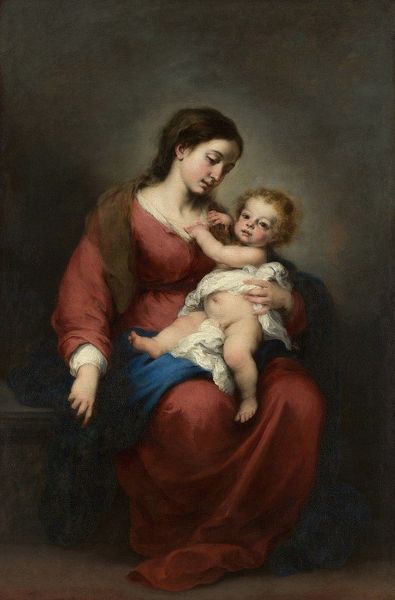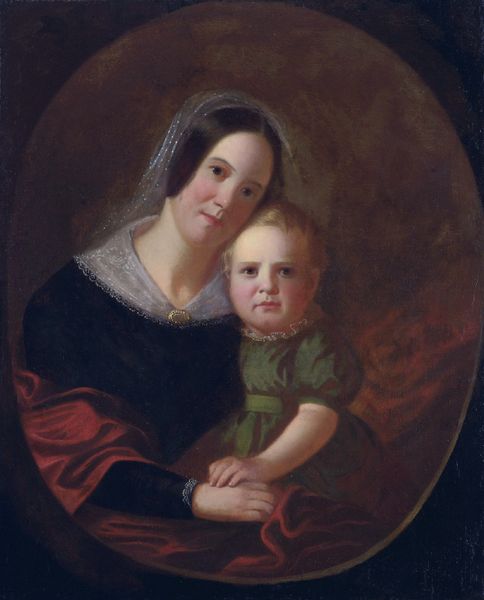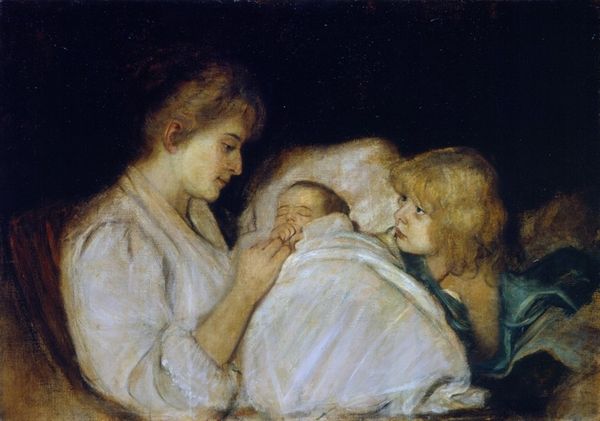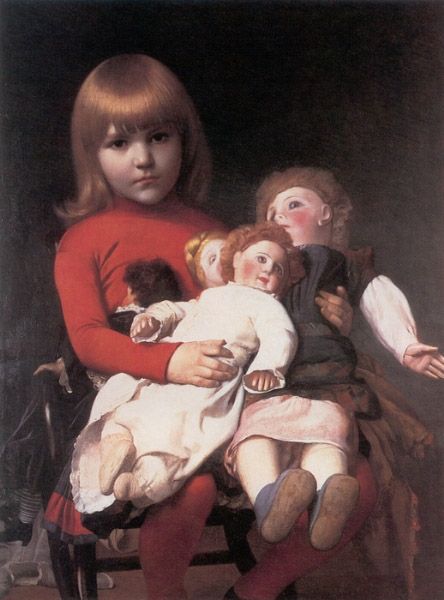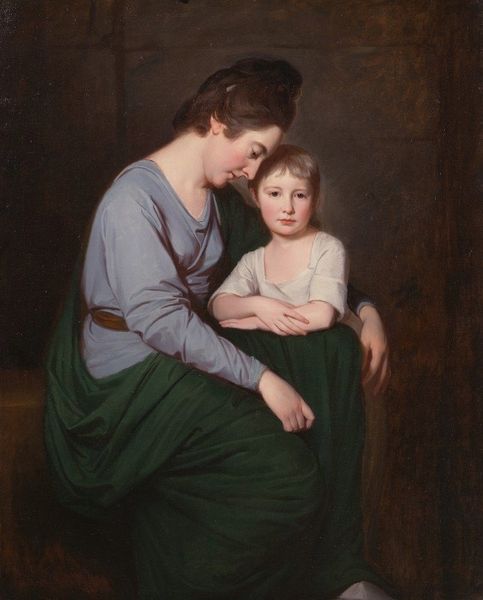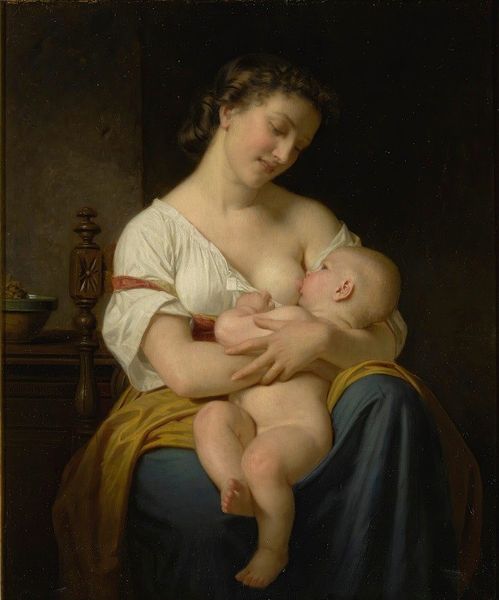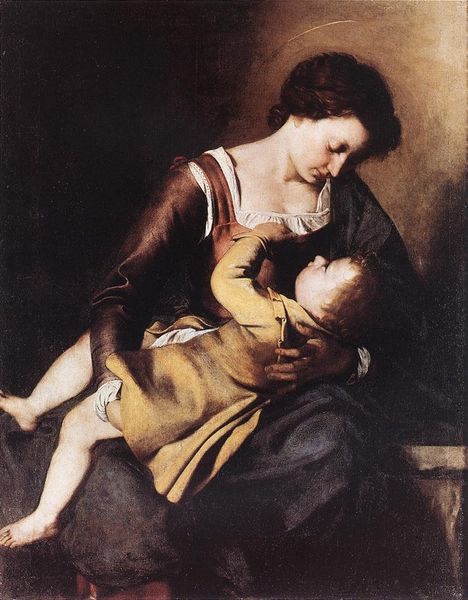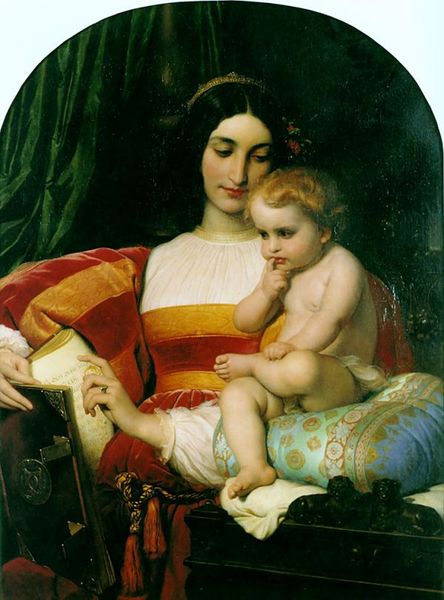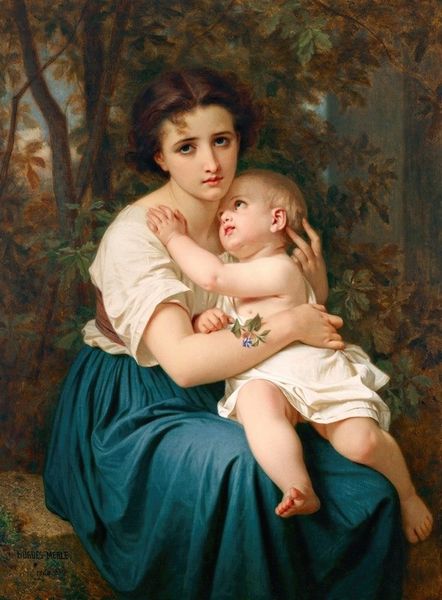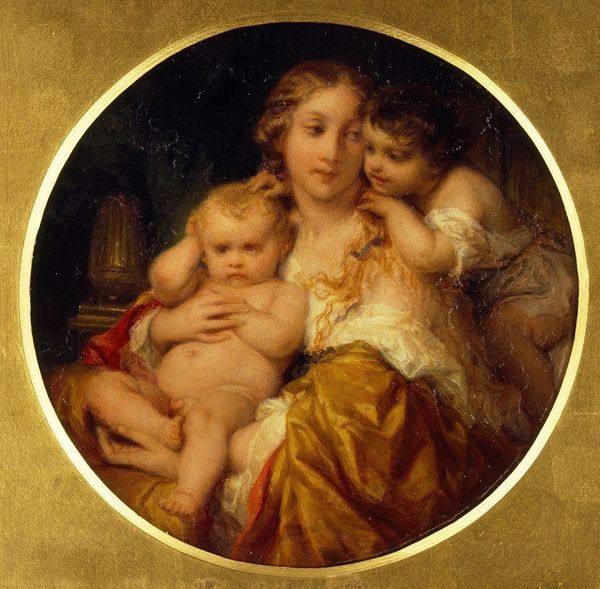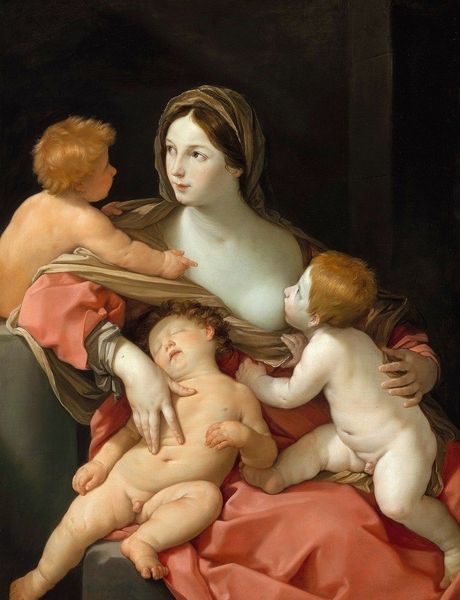
oil-paint
#
portrait
#
figurative
#
oil-paint
#
oil painting
#
underpainting
#
group-portraits
#
romanticism
#
portrait drawing
#
portrait art
Copyright: Public Domain: Artvee
Editor: Here we have Thomas Sully’s “The David Children,” an oil painting from 1826. It's a touching scene, with a serene young woman watching over two children. What are your initial thoughts when you look at it? Curator: I see a powerful representation of early 19th-century American ideals regarding motherhood and domesticity. This wasn't simply a sentimental image. Consider the historical context: the burgeoning republic needed to establish clear social roles, and women were often cast as the moral compass, the center of family life. Does this artwork confirm or challenge this idea? Editor: I guess it seems to confirm it at first glance, but the way the woman looks, so self-possessed and the inclusion of another women walking up the stairs - that is very different than "mother and child" images I'm familiar with. Curator: Exactly. What does the representation of children tell us? Their vulnerability? How does it normalize very particular forms of gendered labour, especially if this portrait commissioned from a very affluent family? Sully romanticizes childhood, aligning it with ideas of innocence and purity that become tools for controlling women's access to political enfranchisement. Editor: So it's not just a sweet picture of a family? It’s reinforcing social and political norms of the time through the lens of idealized motherhood and domesticity? Curator: Precisely. We need to consider art like this as active participants in shaping cultural understanding. How are those norms upheld today or challenged in contemporary artwork? What stories aren't being told within them? Editor: I never thought about portraits in that light, about how much of a social narrative they embody! Curator: Indeed. By understanding art history through the perspectives of gender, race, and class, we gain a much richer and more critical appreciation.
Comments
No comments
Be the first to comment and join the conversation on the ultimate creative platform.
